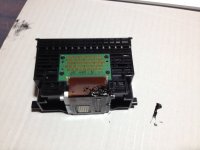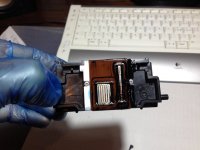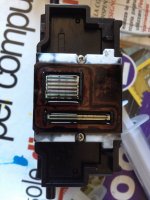- Thread starter
- #21
Sherden
Printer Guru
- Joined
- Aug 25, 2014
- Messages
- 126
- Reaction score
- 63
- Points
- 147
- Location
- Sardinia
- Printer Model
- Canon IP4300 - Epson XP-810
I've just finished refilling the carts, the printer is doing some cleaning cycle by itself and emptied cyan, yellow and magenta carts (this afternon the first time I pulled them out they were still at 15%).
I hoped it was only a problem of empty cartridges but no luck . So now, apart from the PGBK missing, also the cyan is becoming an issue
. So now, apart from the PGBK missing, also the cyan is becoming an issue 
By the way, is an erratic ink level indicator (the cartridge where about to empty and the software still showed them full or 3\4 full)an electronic damage sign also??
I hoped it was only a problem of empty cartridges but no luck
 . So now, apart from the PGBK missing, also the cyan is becoming an issue
. So now, apart from the PGBK missing, also the cyan is becoming an issue 
By the way, is an erratic ink level indicator (the cartridge where about to empty and the software still showed them full or 3\4 full)an electronic damage sign also??





